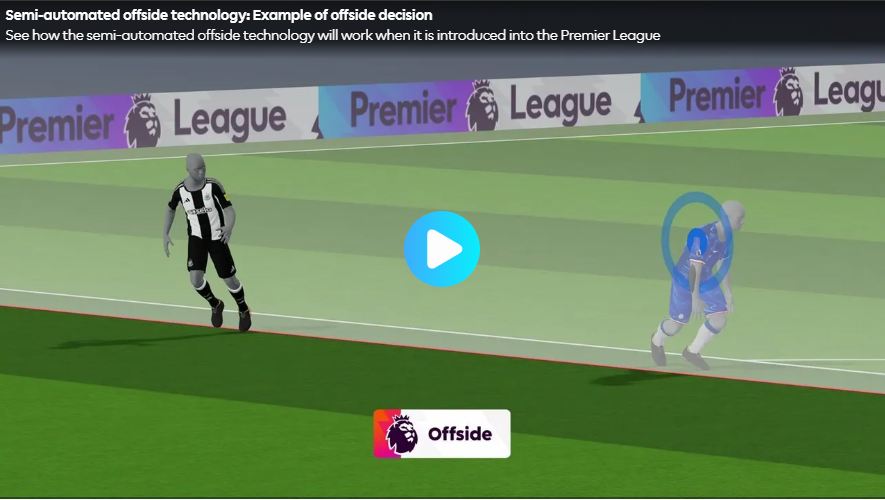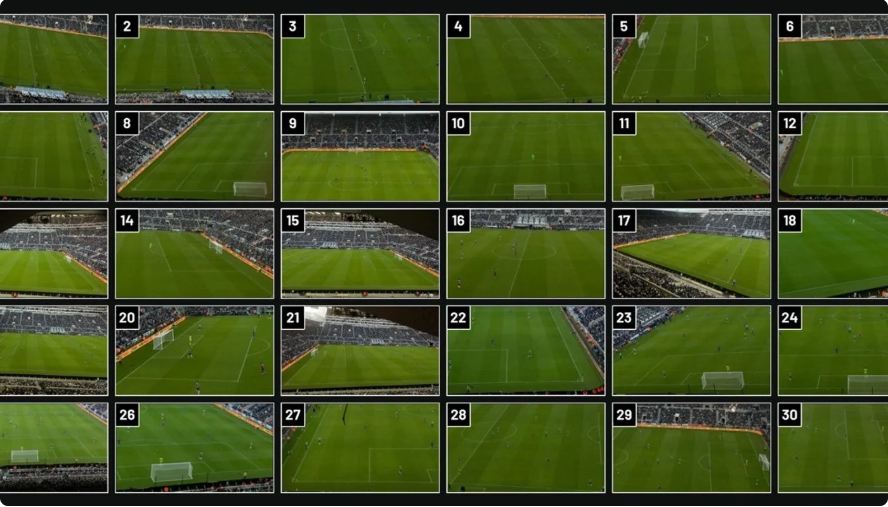After much waiting, the Premier League will apply semi-automatic offside (SAOT) technology from round 32.
SAOT has been used in the most recent men's and women's World Cups (Qatar 2022 and Australia - New Zealand 2023). In the UEFA Champions League, it has been included since the 2022-2023 season.
In Serie A, SAOT has been applied since January 2023, La Liga has been since the beginning of this season. In England, before applying in the Premier League, SAOT has been tested in the 5th and 6th rounds of the FA Cup.
What is semi-automatic offside technology?
Saot is a tool for referee Var. It has the effect of automating situations that need to be handled so that the referee can make a final decision. For Saot, the most noticeable issues are "the time when the ball leaves the foot" and the position of the striker compared to the defenders.
For offside errors, VAR will confirm or recommend changing the on-field decision made by the main referee and the side referee in close-range situations. SAOT will help make the final decision many times faster.
If there is no Saot, the VAR referees need to use the technology to play back the video (RO) and then manually do steps such as: Determine the time when the ball leaves the player's leg, choose the right corner of the machine and then draw the position of the striker - defender. The current technology in this "rice-running" style has caused the match to be interrupted for 1-2 minutes, even longer to be able to give the final result.

How will SAOT operate in the Premier League?
The Premier League has approved the use of SAOT in the tournament since April 1. However, it was not until round 32 (from April 12.4) that it was officially released. The decision to implement SAOT has been approved by Premier League teams since the 2023-2024 season, but it will take a year for it to be officially used.
For Saot, the Organizing Committee estimates to shorten 31 seconds on the total time of the referee's decision. In fact, when there is a situation to consider, Sonot will handle almost immediately and return the video results to the VAR referee team. After that, this result was also released on the big screen at the stadium so that fans could observe.
Up to 30 cameras have been installed at Premier League stadiums, allowing referees and technology to grasp more angles. With the current large number of cameras, the frame processing speed has also increased significantly, expected to be 100 frames per second.


The last two World Cup men and women use Saot. Even the ball has been attached to determine the exact "time when the ball leaves the foot". But in the Premier League, the organizers feel that they do not need to attach the chip because the camera used will monitor the exact movement of the ball.
Players are also constantly monitored with 10,000 points of body data, helping to automatically determine whether the attacking player is offside at "the time the ball leaves the foot". SAOT will mark any player to be offside.
The SAOT runs completely automatically and can be monitored by an operator. The VAR referee team will ask some people to do the SAOT work manually.
Does the use of SAOT increase the accuracy of refereeing decisions?
Basically not! However, it will have an absolute advantage in shortening the time for the referees. According to FA statistics, SAOT has made 100% accurate decisions in tournaments it has applied since the beginning of the season.
However, SAOT is not a miracle that can solve everything. In the FA Cup match between Bournemouth and Wolves, old-fashioned VAR was used when the referee needed to consider a situation of watching the ball with his hand or not.
When applying SAOT, is VAR still effective in offside situations? The answer is yes! In many cases, the attacking players have been offside, but if there is a response from the team being awarded a penalty, the referees will consider making a decision on whether the attacking player is in a position to hinder the opponent's defensive moves or not.
Factors such as obstructing the goalkeeper's vision or obstructing the opponent's defender are things that technology cannot judge, only the referee is the one who makes the decision.











